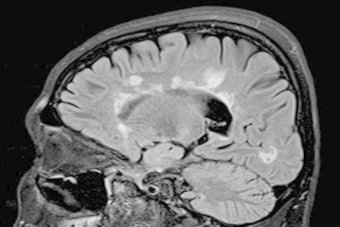Australian scientists say they have made a significant breakthrough in the treatment and detection of multiple sclerosis (MS).
New software developed at the Royal Melbourne Hospital has been shown to assist doctors in the detection of brain lesions caused by MS and could lead to a much earlier detection of brain tumours and a myriad of other diseases.
Hospital director of research Frank Gaillard said finding the right treatment for MS patients was crucial.
He said painstaking process involved looking through hundreds of scans, comparing old and new images to find new lesions.
“It’s similar to having a couple of Dalmatians running around and trying to spot if either of them has an extra dot or not,” Dr Gaillard said.
He said the technology developed at the hospital could detect minute changes in the brain in patients with MS.
It’s similar to having a couple of Dalmatians running around and trying to spot if either of them has an extra dot or not.
Dr Frank Gaillard on the detection of MS
“Instead of having to look at 200 lesions and identify one that might be new … your attention is drawn to the one that wasn’t present before,” he said.
“Now, because there are changes in the physiology and position and how the scans are obtained … areas … show up that aren’t real.
“The job of the radiologist, instead of being one trying to identify the lesions, is … to use our normal clinical skills in assessing whether that lesion is actually a demyelinating lesion or caused by something else.”
He said the new technology, which is already being used in live scans, could tell doctors whether a treatment was working or not long before symptoms associated with an inappropriate drug started to appear.
Patients welcome detection breakthrough
James Zahra was in his early 20s when he was diagnosed with the incurable disease seven years ago.
“I woke up one morning, I’d lost the use of the left side of my face and my eyesight in my left eye had diminished by about 90 per cent,” he said.
“It wasn’t as much of a shock as you’d think … I was young and didn’t really know anything about it.
“But people around me were a lot more scared than I was.”
Mr Zahra has been on a number of different drugs over the years and described much of his treatment as trial and error.
He welcomed the Australian-first technology.
“If the machine can do what they claim it does, then fortunately for us, they can treat us appropriately,” he said.
“If something is early detected they can jump on it faster before it does affect us.
“To know what’s going to happen before it actually happens gives us all a solid headstart.”

